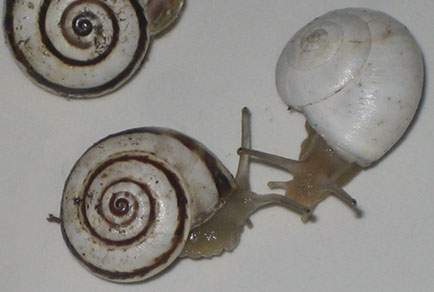Abstract
Theba pisana (Müller, 1774), a Mediterranean snail, is known for its heat tolerance and its remarkable shell colour polymorphism ranging from pale white to darkly striped, although darker morphs are considered less vital in hot habitats due to presumably stronger absorption of radiation. Melanin, the black pigment of these snails, is known as an effective antioxidant, and elevated temperatures can increase oxidative stress. By analysing oxidative waste products via the ferrous oxidation xylenol orange (FOX) assay as a marker for the lipid peroxidation level, we aimed at investigating possible links between heat stress, colouration and antioxidant defence capacity in T. pisana. Although we found increasing levels of peroxidation products with increasing heat exposure duration, there was no difference in antioxidant defence capacity observable between different morphs of T. pisana. Hence the avoidance of lipid peroxidation as an environmentally relevant factor for the maintenance of melanistic morphs in strongly illuminated habitats can be considered improbable.

